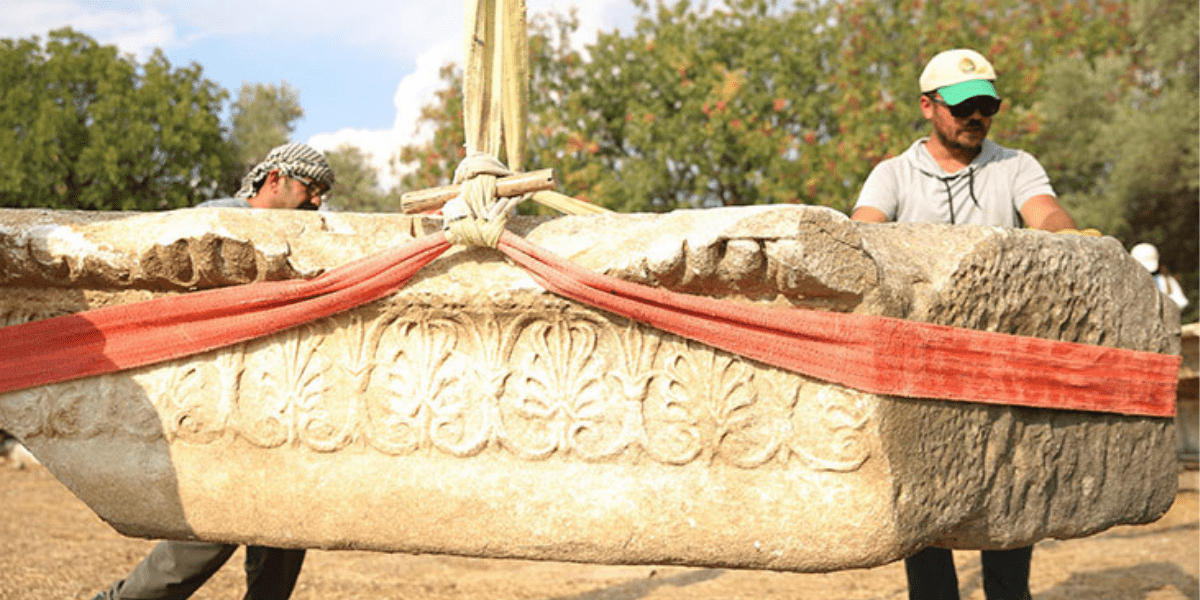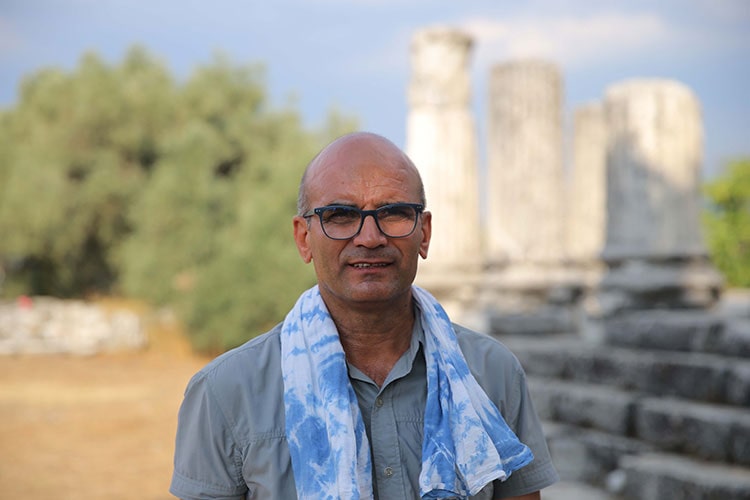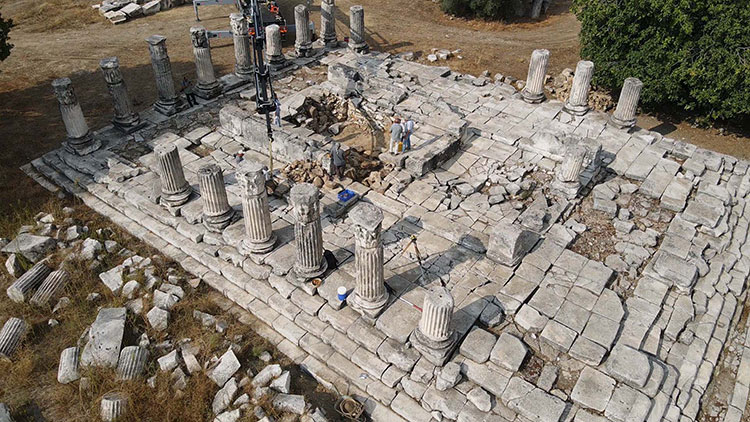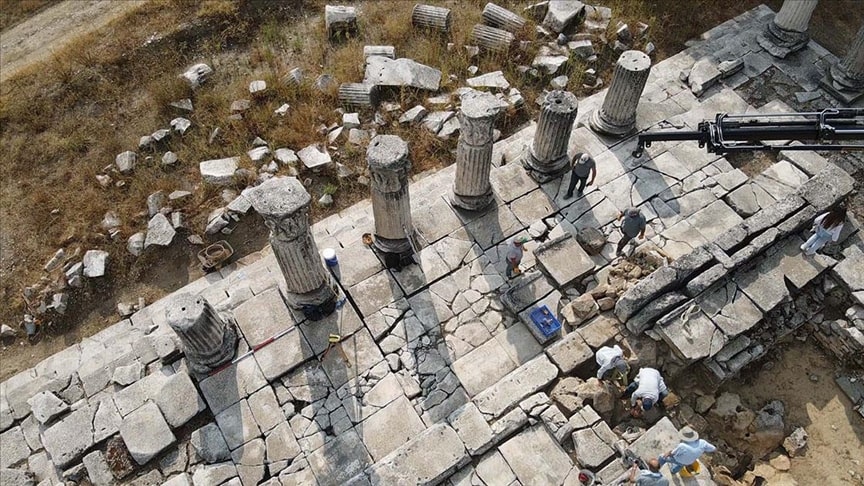
The 3,000-year-old Lagina Hecate Temple in Lagina Hecate Sanctuary is being resurrected
The 3,000-year-old Lagina Hecate Temple in the ancient temple complex Lagina Hecate Sanctuary located in the Bodrum district of Türkiye’s Muğla province continues to restoring.
Hecate is a goddess in ancient Greek mythology, associated with magic, witchcraft, the moon, night, ghosts, dogs and road junctions.

The Temple of Hecate in Lagina was built in the 3rd century BC and was also used during the Roman period. The most important structure of the temple complex is the main temple building dedicated to Hecate. In front of this building, there is a statue of Hecate. Other structures of the temple complex include the sacred pool, library and accommodation.
Stratonikeia and Lagina Excavation Committee Head Prof. Dr. Bilal Söğüt and his team are rebuilding the blocks belonging to the superstructure of the naos, the most sacred place of the Lagina Hecate Temple in the 3 thousand year old Lagina Hecate Sanctuary, and the column row around it.

Lagina is one of the two religious centers of Stratonikeia Ancient City. The fact that the temple built in the name of Hecate is located in Lagina makes the sanctuary even more important.
Prof. Dr. Bilal Söğüt said, “This is one of the first places where Osman Hamdi Bey made excavations in Western Anatolia during the Ottoman period. He made excavations here on behalf of the Ottoman Empire in 1891-1892. Now we continue to work here from time to time. We are carrying out both excavation and drawing works in the temple, as well as temporary anastylosis (the reconstruction of a structure in its old form from the blocks unearthed as a result of excavation, without adding any new elements) on the superstructure of the temple. We have become better acquainted with the process in such an important cultural center and the ancient architecture of this place.”

“We are placing the blocks related to the superstructure in stages, both in the part belonging to the naos (the most sacred place of the temple) of the temple and in the places around it that come on the columns we call ‘peristasis’,” he said, stating that they put the blocks of the Lagina Temple of Hecate from about 2,100 years ago in their places as they find them.”

Cover Photo: Durmuş Genç/AA
You may also like
- A 1700-year-old statue of Pan unearthed during the excavations at Polyeuktos in İstanbul
- The granary was found in the ancient city of Sebaste, founded by the first Roman emperor Augustus
- Donalar Kale Kapı Rock Tomb or Donalar Rock Tomb
- Theater emerges as works continue in ancient city of Perinthos
- Urartian King Argishti’s bronze shield revealed the name of an unknown country
- The religious center of Lycia, the ancient city of Letoon
- Who were the Luwians?
- A new study brings a fresh perspective on the Anatolian origin of the Indo-European languages
- Perhaps the oldest thermal treatment center in the world, which has been in continuous use for 2000 years -Basilica Therma Roman Bath or King’s Daughter-
- The largest synagogue of the ancient world, located in the ancient city of Sardis, is being restored











Leave a Reply